The Catholic Church celebrates the Solemnity of the Most Holy Body and Blood of Christ, also known as Corpus Christi. This feast honors Christ’s real presence in the Eucharist. It was started by Pope Urban IV in 1264, with roots in the 13th century.
The day’s biblical readings give us a deeper look at its importance. They include Genesis 14:18-20, Psalm 110:1,2,3,4, 1 Corinthians 11:23-26, and the Gospel Luke 9:11b-17. These texts show how crucial the Eucharist is in Christian worship.
This celebration is a moment for Catholics to think about the Eucharist’s role in their faith.
Key Takeaways
- Corpus Christi is a significant feast in the Catholic Church calendar.
- It celebrates the real presence of Christ in the Eucharist.
- The feast was established by Pope Urban IV in 1264.
- Biblical readings provide insight into the significance of the Eucharist.
- The celebration is an opportunity for Catholics to reflect on their faith.
The Sacred Mystery of the Eucharist
The Eucharist is at the heart of Christian worship. It has been a source of spiritual nourishment for centuries. It is seen as the “source and summit of the Christian life” (Lumen Gentium, no.11), showing its key role in faith.
The Divine Gift of Christ’s Presence
The Eucharist brings Christ’s presence to believers, a divine gift. It nourishes their spiritual journey. Through it, Christians feel a deep connection with Christ, getting spiritual strength for their path.
Transformative Power of the Blessed Sacrament
The Eucharist has the power to unite believers with Christ and each other. It builds a sense of community and shared worship. This unity is a key part of the Christian faith, as the Eucharist brings people together.
Personal Encounter with the Living Christ
In the Eucharist, Christians meet the living Christ. They have a personal and intimate connection with their Savior. This meeting changes their lives, guiding them on their faith journey.
| Aspect of Eucharist | Significance | Impact on Faith |
|---|---|---|
| Divine Presence | Represents Christ’s presence among the faithful | Nourishes spiritual journey |
| Transformative Power | Unites believers with Christ and each other | Fosters community and shared worship |
| Personal Encounter | Facilitates intimate connection with Christ | Shapes lives and guides faith journey |
The Eucharist is a key part of Christian worship. It shows Christ’s presence and brings believers together. Through it, Christians remember their faith’s traditions and the power of the Blessed Sacrament.
Historical Development of Corpus Christi
In the 13th century, a divine vision by St. Juliana of Liège started the Corpus Christi celebration. This feast honors the Body and Blood of Christ. It is deeply rooted in Catholic tradition and liturgy.
St. Juliana of Liège and the Divine Vision
St. Juliana of Liège was key in starting Corpus Christi. Her visions in 1209 showed the need for a Eucharist feast. Her love for the Blessed Sacrament helped convince Pope Urban IV to create the feast.
Pope Urban IV’s Papal Bull “Transiturus”
In 1264, Pope Urban IV issued “Transiturus,” making Corpus Christi a universal feast. This document highlighted the Eucharist’s importance. This was a major step in Corpus Christi’s history.
St. Thomas Aquinas and Eucharistic Hymns
St. Thomas Aquinas, a famous theologian, wrote the feast’s liturgical texts for Pope Urban IV. His hymns, like “Lauda Sion,” are crucial to Corpus Christi. They celebrate the Eucharist with deep theological insight.
Evolution of the Feast Through the Centuries
Over time, Corpus Christi has grown, shaped by the Catholic Church’s theology and liturgy. It’s now a big event in many Catholic communities. It’s celebrated with grand processions and Eucharistic adoration.
| Year | Event | Significance |
|---|---|---|
| 1209 | St. Juliana’s first vision | Beginning of devotion to Corpus Christi |
| 1264 | Pope Urban IV’s “Transiturus” | Establishment of Corpus Christi as a universal feast |
| 13th Century | Composition of Eucharistic hymns by St. Thomas Aquinas | Enrichment of the liturgy with profound theological insight |
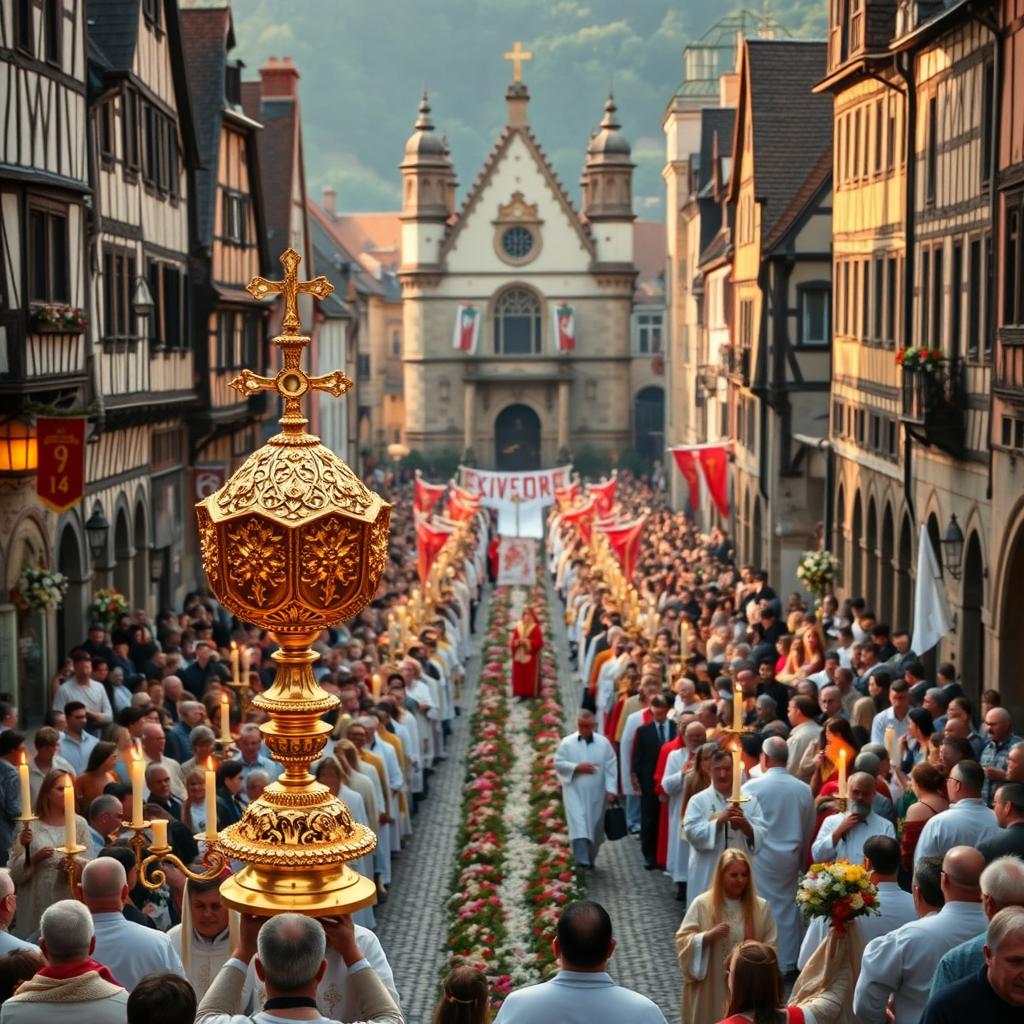
The history of Corpus Christi shows its lasting importance in Catholic faith. From St. Juliana’s visions to St. Thomas Aquinas’s hymns, it’s a key part of Catholic celebration and devotion.
Understanding the Solemnity of the Most Holy Body and Blood of Christ
The Solemnity of the Most Holy Body and Blood of Christ is a special time. It lets us explore the deep teachings of the Catholic Church, especially about the Eucharist. This celebration is all about the Eucharist as a sacrament.
The idea of transubstantiation is key here. It shows how the bread and wine become the real Body and Blood of Christ. This idea is vital for Christ’s sacrifice to be present in the liturgy.
Transubstantiation: The Bread of Heaven
Transubstantiation has been a big part of Catholic teachings since the Middle Ages. It talks about how bread and wine change into Christ’s Body and Blood during the Eucharistic consecration.
This idea is not just a theory but a spiritual truth that shapes the Catholic faith. The Catechism of the Catholic Church says, “The mode of Christ’s presence under the Eucharistic species… is unique. It is a substantial presence, by which Christ, the God-man, is wholly and entirely present” (CCC 1374).
| Key Aspects | Description |
|---|---|
| Transubstantiation | Change of bread and wine into Christ’s Body and Blood |
| Eucharistic Consecration | The moment when bread and wine are transformed |
| Substantial Presence | Christ’s whole and entire presence under the Eucharistic species |
Christ’s Sacrifice Made Present
The Eucharist brings Christ’s sacrifice to us in a special way. It’s not just a memory but a real re-presentation of the Cross’s sacrifice.
This idea is at the heart of the Solemnity of the Most Holy Body and Blood of Christ. The feast honors the gift of the Eucharist, which is central to Catholic worship and devotion.
The Mystery of Faith in Catholic Teaching
The mystery of faith in the Eucharist is a deep part of Catholic teaching. It’s about believing in Christ’s real presence in the Eucharist and seeing it as a source of spiritual nourishment.
When Catholics join in the Eucharistic feast, they are called to deepen their faith. They get to meet Christ’s presence in a personal and meaningful way.
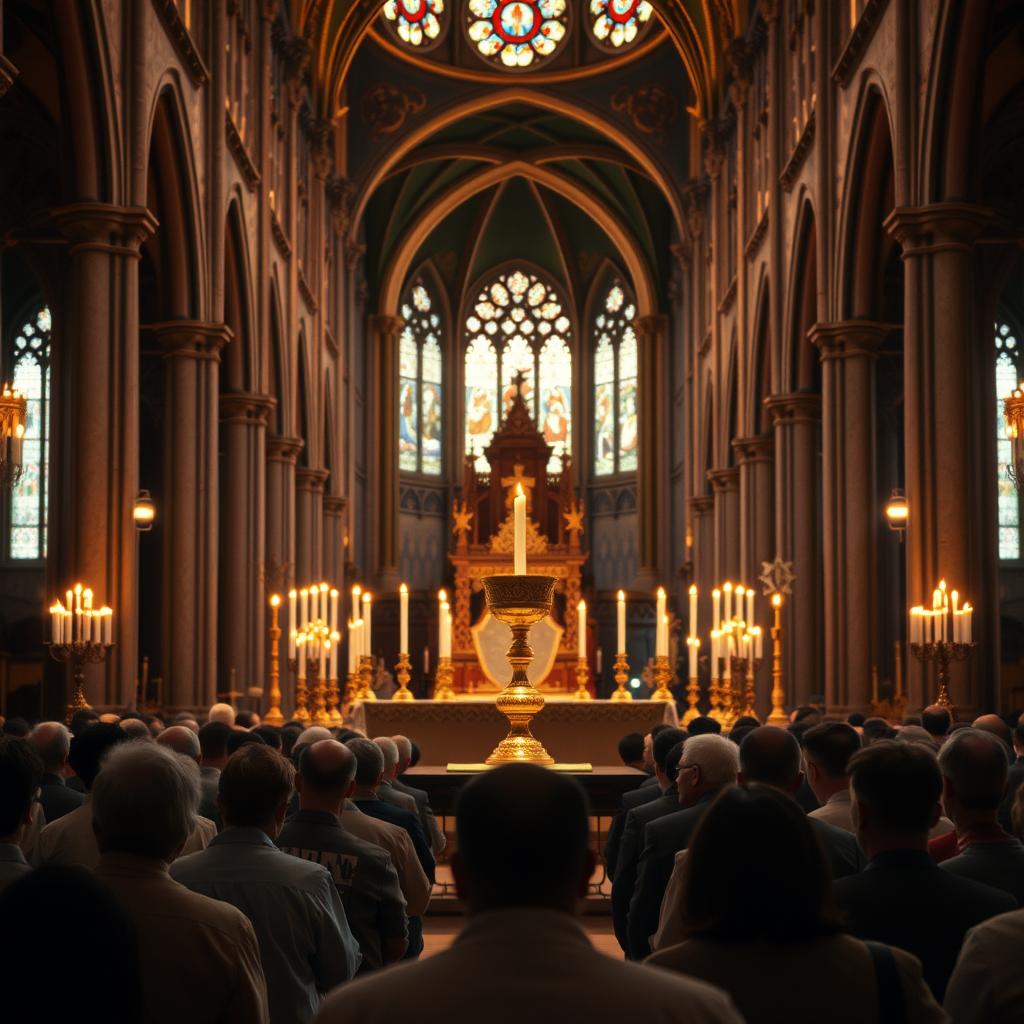
Melchizedek’s Offering: Genesis 14:18-20
In Genesis 14:18-20, Melchizedek offers bread and wine to God. This story is key to understanding the blessed sacrament and its role in Christian worship.
The Priest-King of Salem and His Significance
Melchizedek, the priest-king of Salem, is a mysterious figure. He offers bread and wine to bless Abram. This act is more than a simple gesture; it foreshadows the holy communion of Christians.

Bread and Wine as Prefigurement of the Eucharist
Melchizedek’s offering of bread and wine foreshadows the Eucharist. This shows the Eucharist is a continuation of a sacred tradition from the Old Testament.
Abraham’s Tithe and Its Symbolic Meaning
Abraham gives Melchizedek a tithe of everything. This act shows Abraham’s respect for Melchizedek’s priestly role. It symbolizes reverence and acknowledgment of the divine in holy communion.
“And Melchizedek king of Salem brought out bread and wine; it was for him that he was priest of God Most High. He blessed him and said: ‘Blessed be Abram by God Most High, maker of heaven and earth; and blessed be God Most High, who delivered your foes into your hand.’ Then Abram gave him a tenth of everything.”
This biblical account in Genesis 14:18-20 shows the importance of Melchizedek’s offering. It connects the Eucharist in Christian tradition to ancient practices of offering bread and wine.
The Messianic Priesthood in Psalm 110
Psalms 110 is key to understanding Christ’s eternal priesthood. It’s a vital part of the church liturgy on the Solemnity of the Most Holy Body and Blood of Christ. It shows Christ’s role as a priest forever, like Melchizedek.
Analyzing “The LORD said to my Lord” (Verse 1)
The first verse of Psalm 110 says, “The LORD said to my Lord, ‘Sit at my right hand until I make your enemies your footstool,'” It’s a deep message with messianic meaning. The New Testament often quotes this verse, showing Christ’s rise to power.
“The LORD said to my Lord, ‘Sit at my right hand until I make your enemies your footstool'” (Psalm 110:1).
“You are a priest forever, in the line of Melchizedek” (Verse 4)
Verse 4 of Psalm 110 says, “You are a priest forever, in the line of Melchizedek.” This verse is crucial for understanding Christ’s priestly role. It’s different from the Levitical priesthood. The Responsorial Psalm often focuses on this verse, showing Christ’s eternal priesthood.
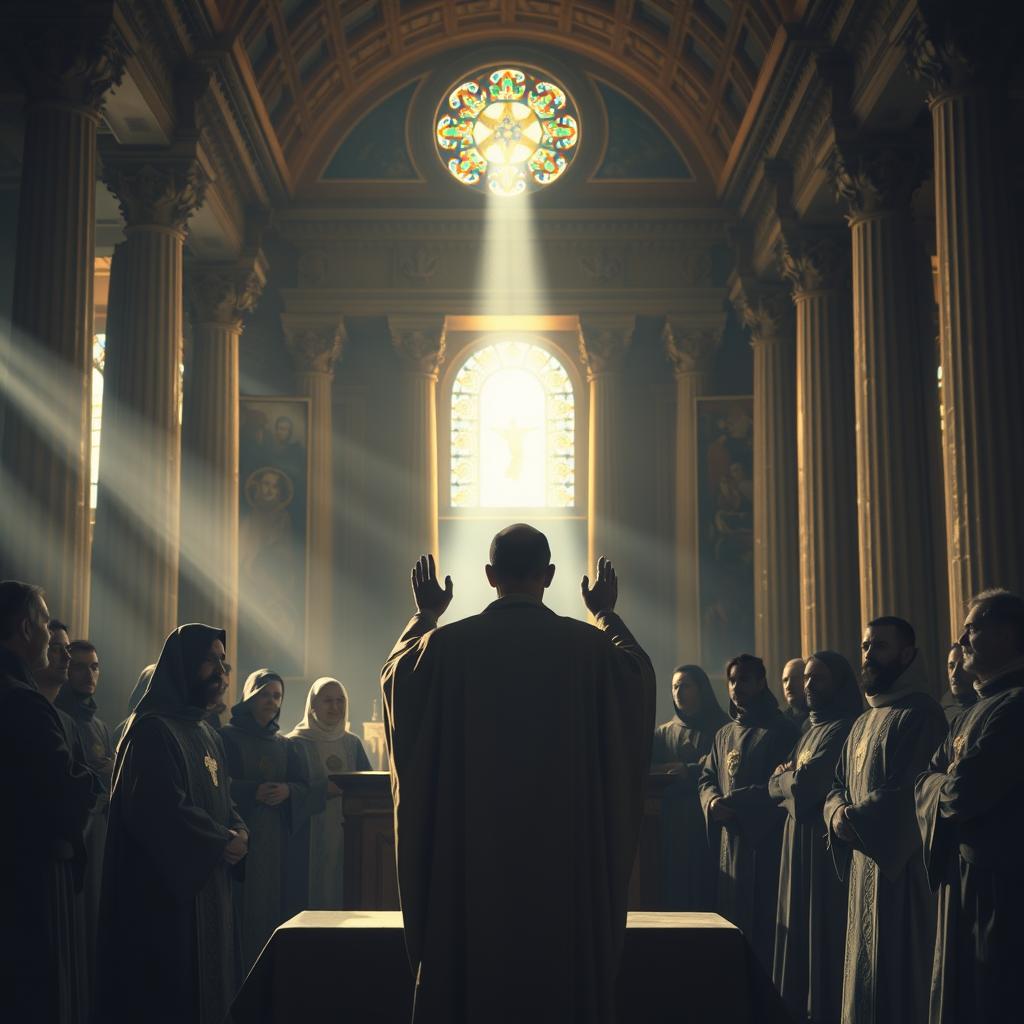
The mention of Melchizedek in Psalm 110:4 is important. It links Christ’s priesthood to the ancient Melchizedek tradition. Melchizedek offered bread and wine, foreshadowing the eucharistic feast. This connection deepens our understanding of Christ’s sacrifice and priesthood, central to the catholic celebration of Corpus Christi.
By looking at Psalm 110, we learn more about Christ’s role as a priest forever. This theme is deeply connected to the eucharistic feast and the Church’s liturgical celebrations.
The Institution of the Eucharist: 1 Corinthians 11:23-26
Paul’s account of the Last Supper in 1 Corinthians 11:23-26 is the earliest written record of the Eucharist. It shows its key role in Christian tradition. This passage also gives insight into early Christian practices and beliefs.
Paul’s Faithful Transmission of Tradition
The apostle Paul passed on the Eucharistic tradition to the Corinthian church. This act shows its importance in early Christianity. Paul ensured a link between the historical Jesus and the growing Christian communities.
“For I received from the Lord what I also handed on to you, that the Lord Jesus, on the night he was betrayed, took bread, and after giving thanks, broke it and said, ‘This is my body that is for you. Do this in remembrance of me.'” – 1 Corinthians 11:23-24
“This is my body, which is for you”
The phrase “This is my body, which is for you” shows Christ’s sacrificial gift. It points to Christ’s body given for humanity’s salvation. This is a key theme in Christian theology.
Proclaiming the Lord’s Death Until He Comes
The command to “proclaim the Lord’s death until he comes” (1 Corinthians 11:26) adds an eschatological dimension to the Eucharist. It looks forward to Christ’s return. This places the Eucharistic celebration within the story of Christian hope and expectation.
| Eucharistic Elements | Significance |
|---|---|
| Bread | Represents Christ’s body given for humanity |
| Wine | Symbolizes Christ’s blood shed for the forgiveness of sins |
| Eucharistic Celebration | Commemorates Christ’s sacrifice and anticipates His return |
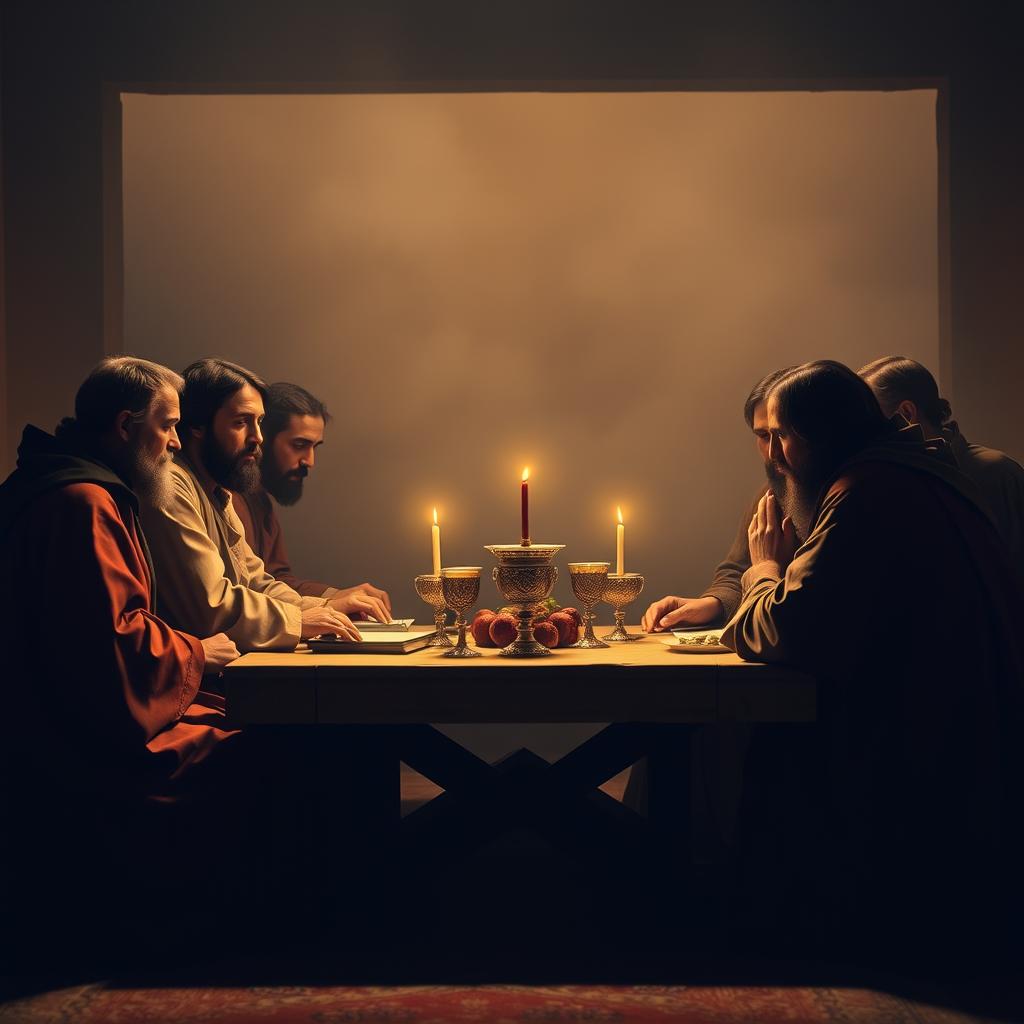
The institution of the Eucharist, as recorded by Paul, is key to Christian worship and practice. It remains a central part of Christian liturgy. It connects believers across time and geography to the Last Supper and Christ’s sacrifice.
Multiplication of Loaves: Luke 9:11b-17
The story of the multiplication of loaves in Luke 9:11b-17 is key to understanding the Eucharistic feast in Catholic celebration and church liturgy. It shows Jesus’ amazing power and hints at the Eucharist’s start.

Jesus Teaching, Healing, and Feeding the Multitude
Jesus welcomed the crowd and healed those in need in Luke 9:11b-17. He taught them about the Kingdom of God. Then, he fed them with five loaves and two fish.
This act shows Jesus’ kindness and divine strength.
- Jesus taught the multitude about the Kingdom of God.
- He healed those who were in need of healing.
- With five loaves and two fish, Jesus fed the entire multitude.
The Twelve Baskets: Abundance and Providence
The miracle left twelve baskets of leftovers, showing abundance and divine providence. This abundance mirrors the spiritual nourishment Christ gives in the Eucharist.
“And they ate and were satisfied, and they gathered what was left over; twelve wicker baskets full of fragments that were more than they could eat.” – Luke 9:17
Eucharistic Imagery in the Miracle
The miracle is full of Eucharistic imagery, hinting at the Last Supper and the Eucharist’s start. Jesus’ actions in the miracle are like a priest’s in the Catholic celebration of the Eucharist.
- The use of bread and fish in the miracle.
- The act of giving thanks before distributing the food.
- The abundance of leftovers, symbolizing spiritual nourishment.
In conclusion, the multiplication of loaves in Luke 9:11b-17 is a key event. It shows Jesus’ divine power and foreshadows the Eucharistic feast in church liturgy. This miracle still inspires faith and devotion in the Catholic tradition.
Eucharistic Processions and Worldwide Celebrations
Eucharistic processions are a big part of Corpus Christi celebrations around the world. They show the strong faith of people towards the Blessed Sacrament.
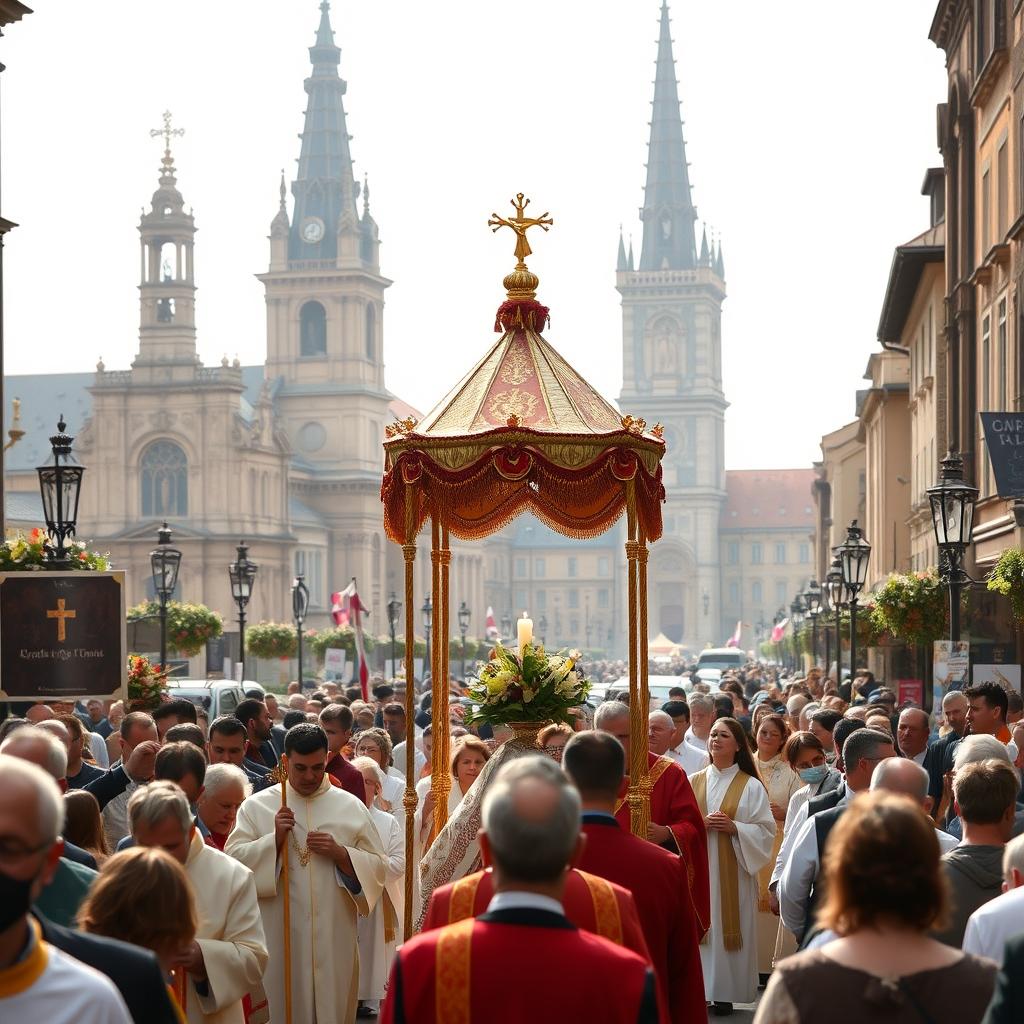
The Monstrance: Christ Carried Through the Streets
The monstrance is key in these processions. It holds the consecrated host. Made of precious materials, it shows the Eucharist’s importance in Christian worship.
As the procession goes through the streets, the monstrance is held high. People pray, sing hymns, and watch with reverence.
Flower Carpets and Decorated Streets in European Traditions
In European towns, streets are covered in flower carpets and decorations. This makes the procession area look festive. It shows the community’s joy and devotion to Corpus Christi.
Latin American and Filipino Corpus Christi Customs
In Latin America and the Philippines, Corpus Christi is celebrated with color and music. Traditional songs and dances add to the festivities. These celebrations mix faith with cultural traditions, making each one special.
These global celebrations show the unity and diversity of the Catholic Church. Communities come together to honor the Eucharist. Through these processions, people strengthen their faith and bond with one another.
Eucharistic Miracles That Inspire Faith
Throughout history, Eucharistic miracles have shown the real presence of Christ in the Eucharist. These events strengthen faith and show the divine presence in the Blessed Sacrament.
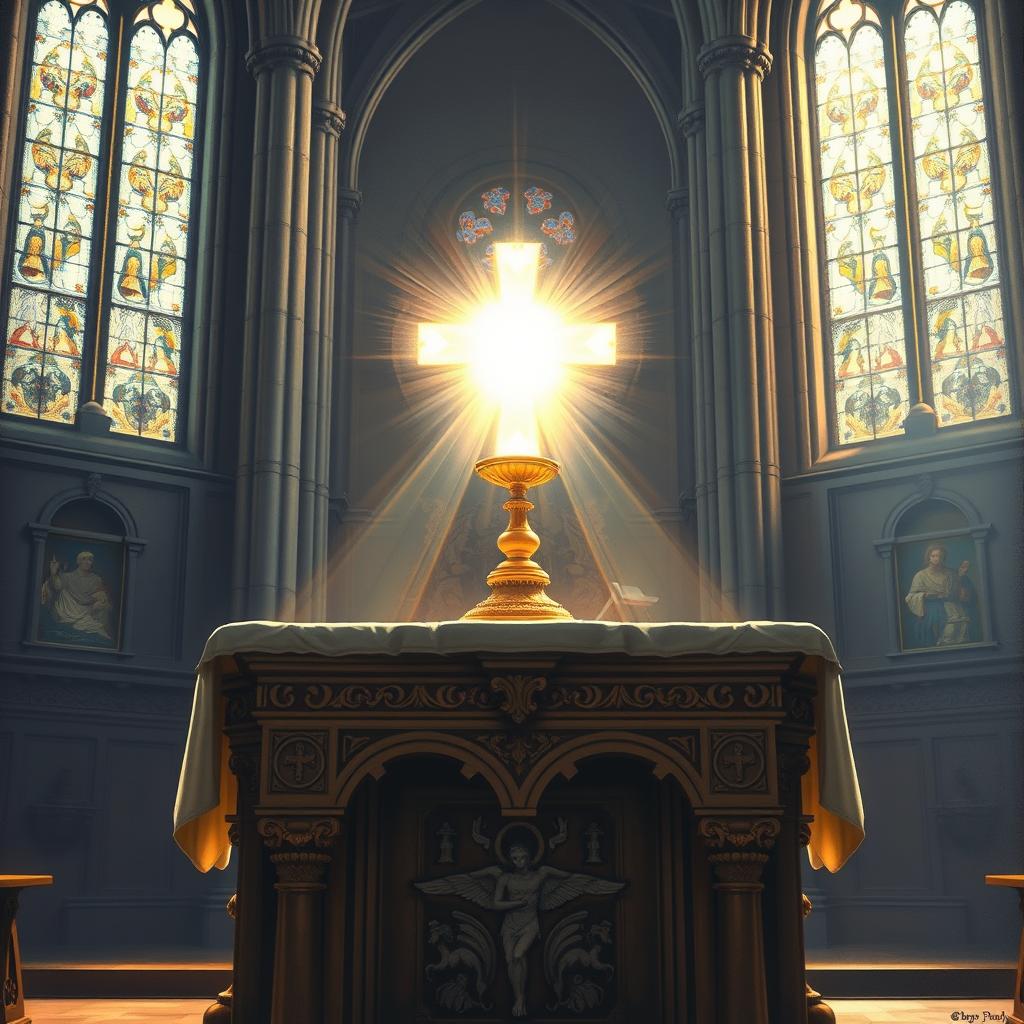
Lanciano: The First Documented Miracle
In the 8th century, a miracle happened in Lanciano, Italy. A priest, doubting Christ’s presence, saw bread and wine turn into flesh and blood. This miracle is well-documented and verified, a key part of Eucharistic devotion.
This miracle is significant for its history and lasting impact on faith. It reminds us of the mystery and reverence of the Eucharist.
Modern Miracles and Scientific Investigations
Many Eucharistic miracles have been reported, with some getting scientific tests. These miracles often show blood or flesh during Mass, proving the real presence.
Scientific tests have found human blood and tissue in the consecrated elements. This confirms the extraordinary nature of these events.
How Miracles Strengthen Eucharistic Devotion
Eucharistic miracles deepen devotion to the Eucharistic feast. They encourage believers to see the Holy Communion with more reverence and faith.
| Miracle | Location | Year |
|---|---|---|
| Lanciano Miracle | Lanciano, Italy | 8th Century |
| Tixtla Miracle | Tixtla, Mexico | 2006 |
| Sokolka Miracle | Sokolka, Poland | 2009 |
These miracles, old and new, show Christ’s lasting presence in the Eucharist. They inspire faith and devotion in Catholics everywhere.
American Catholic Observances of Corpus Christi
In the United States, Corpus Christi is celebrated with great faith and community spirit. Each parish has its own way of honoring this day, showing the diversity of Catholic traditions.
Parish Celebrations Across the United States
Corpus Christi celebrations in parishes are full of life and variety. Many hold Eucharistic processions where the Blessed Sacrament is carried through the streets. These processions are often accompanied by hymns and prayers.
Some parishes also have Eucharistic adoration events. These events let people deepen their devotion to Christ’s presence in the Eucharist.
Community involvement is a big part of these celebrations. Parishes often do charitable work and community service projects. This shows the values of Christian worship and service.
The National Eucharistic Revival Movement
The National Eucharistic Revival Movement aims to strengthen devotion to the Eucharist among American Catholics. It encourages parishes to make their church liturgy more meaningful and engaging.
Bringing Tradition to Contemporary Practice
This movement focuses on blending traditional practices with today’s needs. It aims to include catholic celebration elements that are both relevant to today’s Catholics and rooted in tradition.
Some practices include:
- Enhanced Eucharistic adoration
- Innovative Eucharistic processions
- Educational programs on the Eucharist
By adopting these practices, Catholic communities in the United States can feel a stronger connection to their faith and to each other.
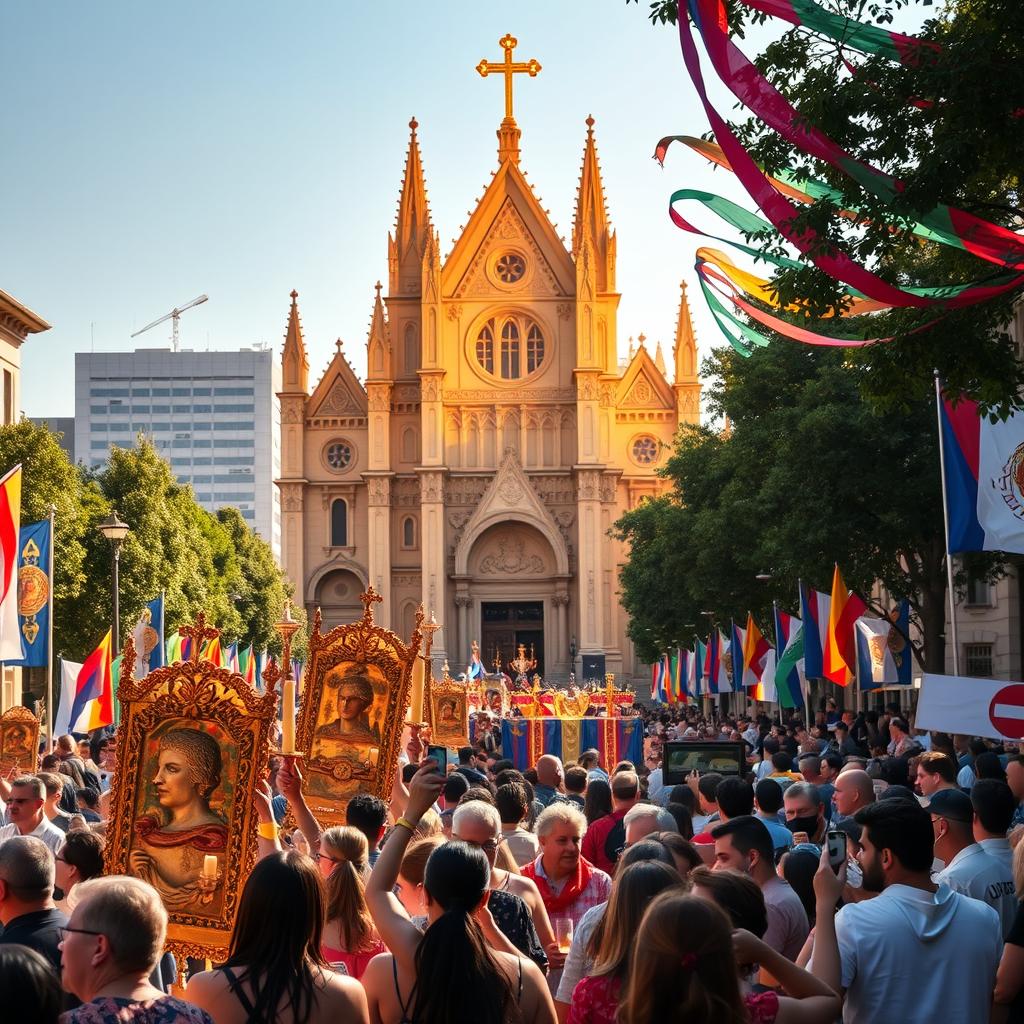
Eucharistic Adoration: Encountering Christ’s Presence
Eucharistic adoration lets believers deeply connect with Christ in the Blessed Sacrament. It’s a key part of Christian worship. It offers a chance for spiritual growth and renewal.
The Practice of Spending Time with the Blessed Sacrament
Prayerful contemplation before the Blessed Sacrament is at the heart of Eucharistic adoration. It’s believed to be Christ’s real presence. This practice helps deepen the relationship with Christ, encouraging believers to reflect on their faith.
“In the stillness of adoration, we find a profound sense of peace and connection to the divine.”
Perpetual Adoration Chapels and Their Impact
Perpetual adoration chapels have the Blessed Sacrament exposed for adoration all the time. They are centers of spiritual renewal. These chapels offer a sacred space for continuous prayer and worship.
| Aspect | Impact |
|---|---|
| Spiritual Growth | Deepens faith and spiritual practices |
| Community Building | Fosters a sense of community among the faithful |
| Prayer Life | Enhances personal and communal prayer life |
Testimonies of Spiritual Transformation
Many have found Eucharistic adoration transformative. They report a renewed sense of purpose and a deeper faith connection.
A Personal Testimony: “Eucharistic adoration has been a source of comfort and strength in my spiritual journey. It has deepened my understanding of Christ’s love and presence in my life.”

In conclusion, Eucharistic adoration is a powerful way to meet Christ’s presence. It promotes spiritual growth and community among believers. Through this practice, believers are drawn closer to Christ, supported by prayer, reflection, and the sacraments.
The Eucharist Across Christian Traditions
The sacrament of the Eucharist brings Christians together, despite their differences. This unity shows how important the Eucharist is in Christian worship.
Orthodox, Protestant, and Anglican Perspectives
In Orthodox churches, the Eucharist is a deep connection to the early Christian tradition. Protestant churches see it as a symbol of remembrance and unity. Anglican churches mix both views, keeping a rich tradition.
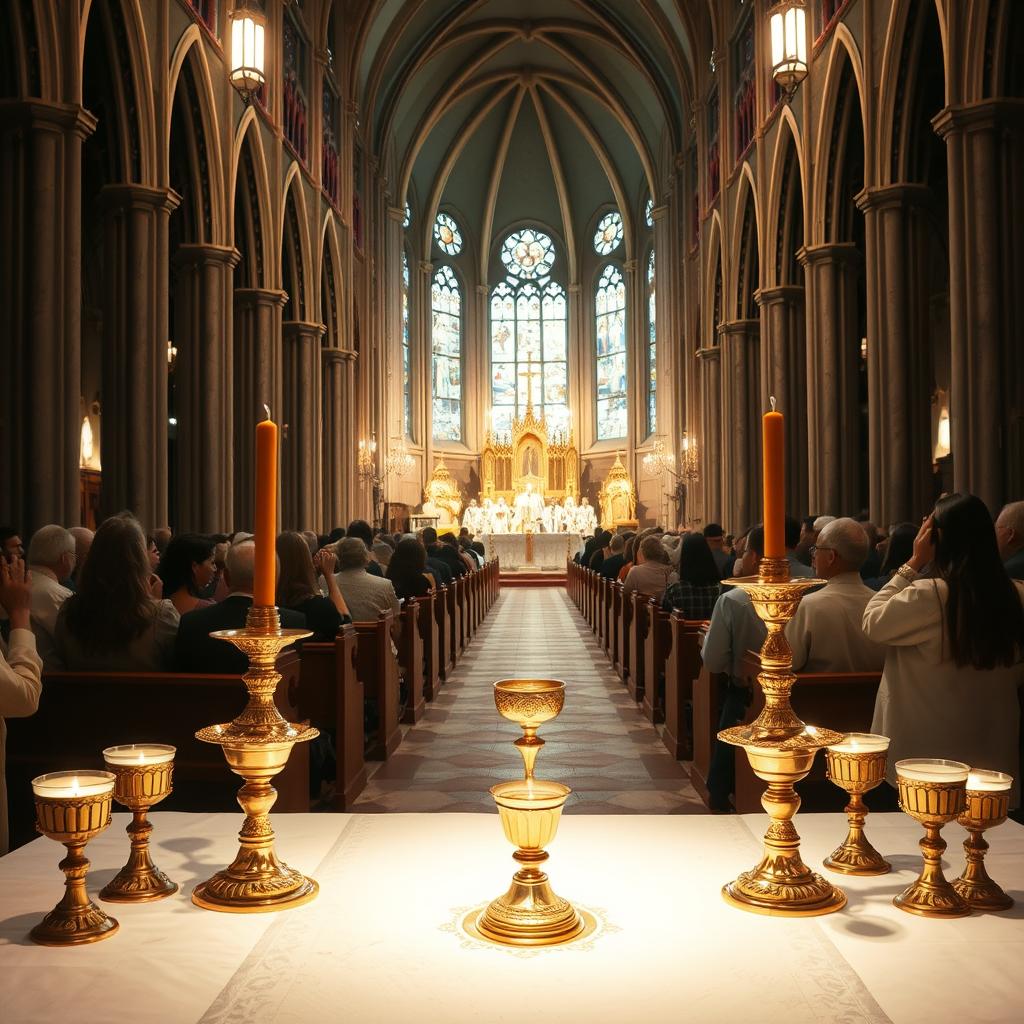
Movements Toward Eucharistic Understanding
Recently, Christians have been working together more on the Eucharist. Ecumenical talks have helped everyone appreciate the Eucharist’s beauty, from the Eucharistic feast to the church liturgy.
Finding Common Ground in Christ’s Presence
Ecumenical efforts focus on Christ’s real presence in the Eucharist. This belief helps Christians unite, celebrating their faith in Christian worship.
This unity journey is not about being the same. It’s about valuing different traditions while staying true to one’s faith. The Eucharist remains a source of spiritual nourishment and unity for all Christians.
Becoming Living Tabernacles in the World
The celebration of Corpus Christi reminds us to carry Christ’s presence in the world. As Catholics, we are called to show love, compassion, and sacrifice like Christ did. This is a big part of our faith.
By joining in the Corpus Christi celebration, we remember our duty to nourish and inspire others. We are to live out the Eucharist’s teachings every day. This makes Christ’s love real in our actions and words.
We are called to serve with kindness, empathy, and generosity. This way, we keep Christ’s mission alive. We bring His love and redemption to a world that needs it.
